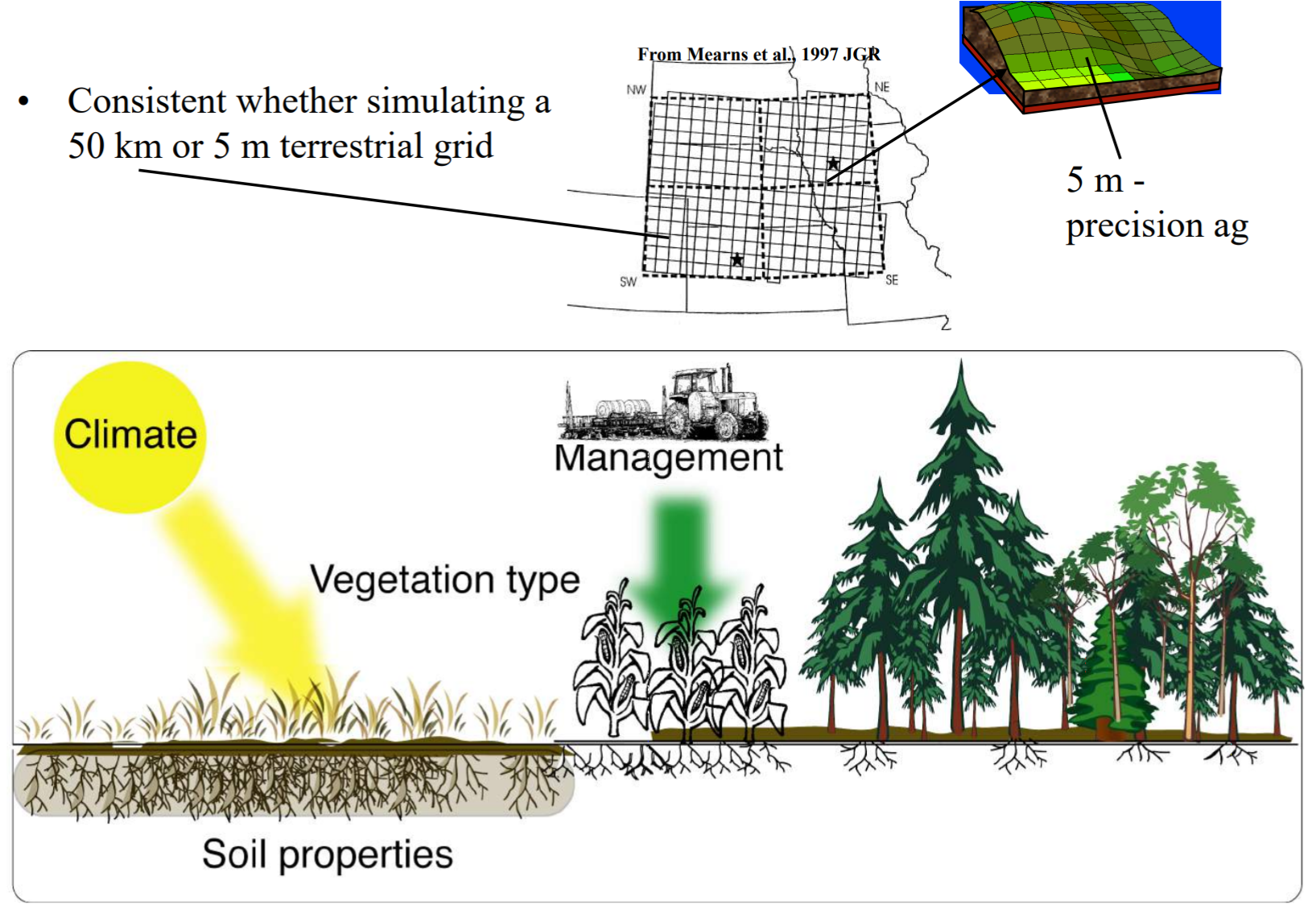Quoted from: Amuti, Tureniguli, Geping Luo, Gang Yin, Qi Hu, and Elizabeth A. Walter-Shea. "Validation of a Process-Based Agro-Ecosystem Model (Agro-IBIS) for Maize in Xinjiang, Northwest China." Agronomy 8, no. 3 (2018): 29. https://doi.org/10.3390/agronomy8030029
Agro-IBIS is an updated version of the Integrated Biosphere Simulator (IBIS) model, integrating agricultural crops (Figure 1) [42,43]. Currently, it represents 17 plant functional types (PFT), including 12 natural vegetation and 5 crop types (soybean, maize, wheat, sugarcane, and Miscanthus) [44,45]. Agro-IBIS can simulate the biogeophysical processes and agricultural management impacts for specific plant types in natural and managed ecosystems. The model represents the land surface and soil physics (momentum exchanges of energy, water vapor and CO2 among soil, vegetation and atmosphere), plant physiology (photosynthesis, respiration, and conductance), crop phenology (leaf emergence, growth, grain fill, and senescence), carbon balance (NPP, soil respiration, organic matter decomposition), as well as the processes related to agro-ecosystems such as solute transport (nitrogen leaching from fertilizer), and crop management options (cultivar selection, planting and harvest date, fertilizing, and irrigation). Agro-IBIS uses hourly time step to simulate the rapid exchanges of energy, water or CO2 between plant, soil, and atmosphere. The driving data range from meteorological dataset at site level to gridded climate datasets at global scale, so the model can be used to investigate precision agriculture and global climate change impacts on terrestrial ecosystems. Each grid cell includes two canopy layers: upper canopy for forest and lower canopy layer for shrubs, grasses, and crops (lower-level vegetation canopy for corn is used in this study). The model contains three snow layers and eleven soil layers of varying thickness (i.e., 5, 10, 20, 30, 40, 60, 80, 100, 150, 200, 250 cm) with corresponding physical properties. Richard’s equation and Darcy’s law are adapted to calculate and model vertical water flux between these soil layers [46]. Agro-IBIS can explicitly represent the temperature and water content of each soil layer, as well as the radiation exchanges between the atmosphere and soil surface. The surface albedo is calculated by the vegetation cover, the surface soil texture class and water content, and the incoming solar radiation. The photosynthesis, stomatal conductance, and respiration of C4 plants are represented physiologically in mechanistic corn growth model [47,48]. To reduce the maximum photosynthetic capacity (Vmax) of the plant, soil moisture, and leaf-nitrogen stress functions are used. Partitioning of dry matter to carbon pools in plants (leaf, stem, grain, root) and phenological stages of development (planting, leaf emergence, tasseling, and harvesting) during the growing season are dynamic and dependent on base temperature for accumulated growing degree days (GDD). The model can also account for carbon and nitrogen fluxes through vegetation, detritus, and soil organic matter. Daily leaf area expansion is obtained by multiplying total leaf biomass carbon and specific leaf area (SLA) at daily time step. Agro-IBIS simulates evapotranspiration (ET) by the sum of total canopy transpiration and evaporation from soil and plant leaf surfaces. Agro-IBIS does not include groundwater as a lower boundary condition, therefore free drainage is allowed in the model. Canopy and land surface processes of different crop functional types (C3 and C4) are determined by their distinctions in physiology, phenology, and responses to management options and environmental stresses. Agro-IBIS outputs include crop yield, dry matter productivity (leaves, stem, grain, and roots), LAI, evapotranspiration, and carbon as well as energy fluxes.









